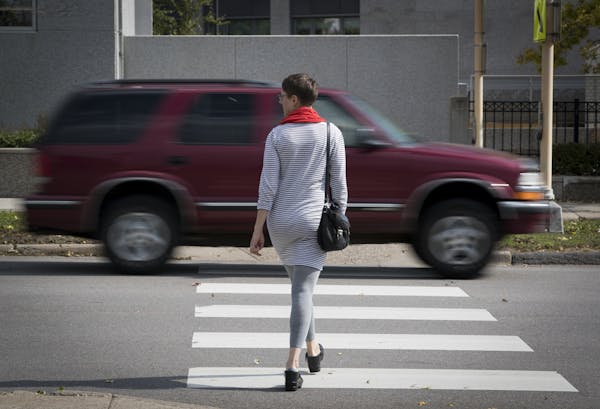Traffic fatalities on Minnesota roads remained flat in 2016 when compared with the number of motorists who died in crashes the previous year, according to preliminary data released Thursday by the Minnesota Department of Public Safety.
Crash reports showed that 397 people were killed between Jan. 1 and Dec. 31 last year, but the count is expected to rise to 412 by the time final numbers are in, the department's Office of Traffic Safety (OTS) said. That would top the 411 who were killed in 2015.
"Disappointing" is how OTS director Donna Berger sized up the numbers. "We have made great strides since our 'Toward Zero Deaths' initiative started in 2003 with a 37 percent reduction in traffic fatalities. But over the past five years we have plateaued, and we are concerned about that."
Traffic fatalities had dropped significantly each year between 2007 and 2014, falling from 510 to 361. Then they spiked in 2015 and were little changed last year.
A big reason for last year's high number is that 60 pedestrians died after being struck by vehicles, making 2016 the deadliest year for those on foot since 1991. The high-water mark came just two years after a low of 17 in 2014.
Minnesota did see declines in the number of motorcyclists who were killed, 53 in 2016 compared to 61 in 2015. The number of bicyclists killed fell from 10 in 2015 to seven last year. The total number of crashes also dropped from 375 in 2015 to 362 last year. Speeding, drunken driving and distracted driving were the top factors resulting in fatal crashes, the OTS said.
The state has made progress in getting drivers to wear seat belts (now at 93.2 percent, according to the 2016 Minnesota Observational Seat Belt Survey) and now requires ignition interlock devices for first-time drunken drivers with an alcohol concentration of 0.16 percent and above along with repeat offenders. But distracted driving is a growing issue on the roads, Berger said.
"We have so many more opportunities with technology in the car and on our phones to be distracted," she said. "We think we have to and are expected to multi-task, but posting things on social media is not something we should be doing inside a 2,000-pound vehicle. That is a guided missile going down the road."
It's not just in Minnesota where law enforcement has concerns. Data from the National Safety Council show that motor vehicle deaths were up 9 percent nationwide through the first six months of 2016 when compared with 2015, and 18 percent higher than the same January-to-June period of 2014.
"Our complacency is killing us," Deborah Hersman, president and CEO of the National Safety Council said earlier this year. "One hundred deaths every day should outrage us. Americans should demand change to prioritize safety actions and protect ourselves from one of the leading causes of preventable death."
Berger said that change often comes at the grass-roots level. She pointed to efforts such as St. Paul's "Stop for Me" campaign to educate drivers about crosswalk safety and the DPS' campaign to get people to speak up when they see dangerous driving behaviors.
"Everybody [should] take responsibility for their safety and that of other motorists and pedestrians," she said. "You have the right to say something and help change traffic safety culture."
Tim Harlow • 612-673-7768
8 months in jail for Blaine man who caused 120-mph crash hours after he was caught speeding

Daughter sues St. Paul, two officers in Yia Xiong's killing

